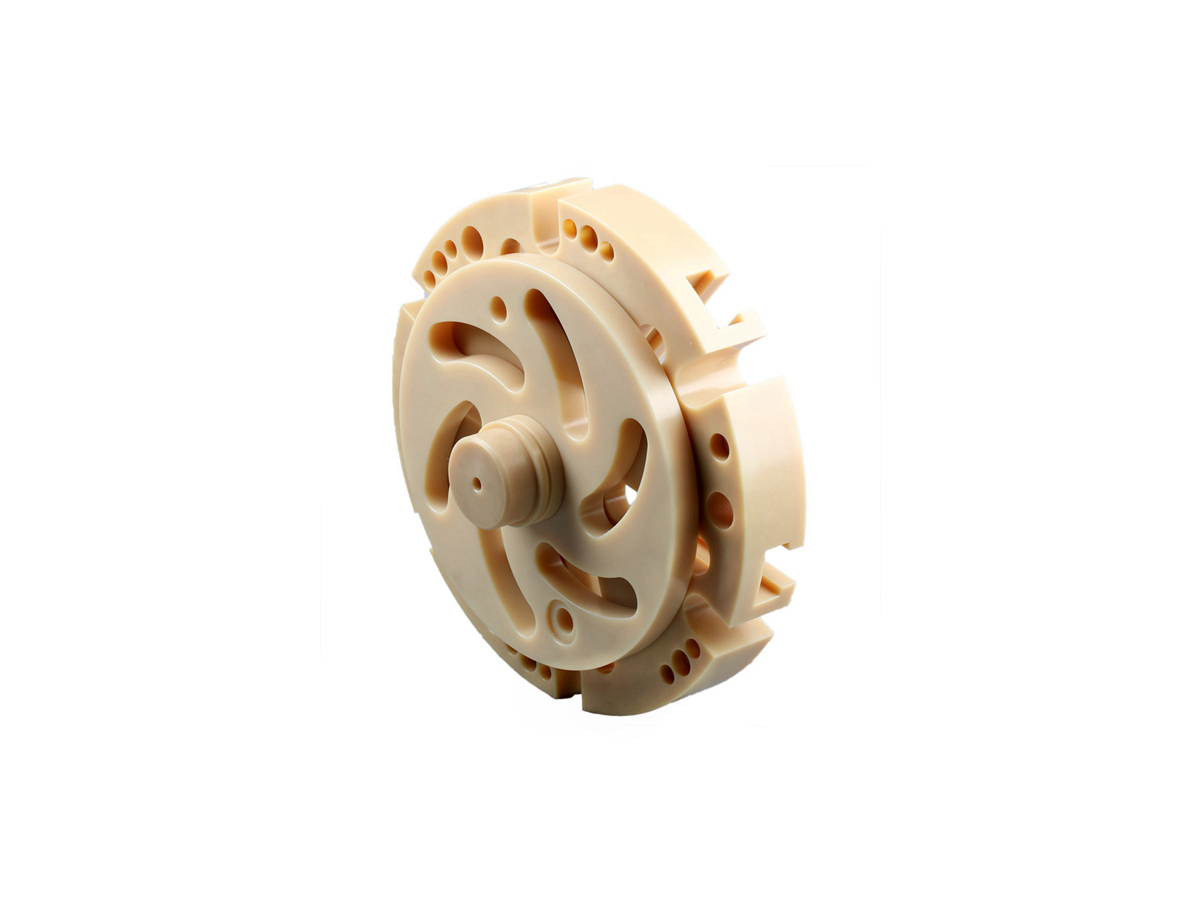Cost-Effective CNC Machining of Polyethylene for Lightweight and Durable Components
Introduction to CNC Machined Polyethylene Components
Industries such as packaging, medical, and industrial equipment require materials that combine affordability, durability, and lightweight characteristics. Polyethylene (PE), including HDPE (High-Density Polyethylene) and UHMW-PE (Ultra-High Molecular Weight Polyethylene), excels as an economical thermoplastic offering excellent chemical resistance, high impact strength, low weight, and good machinability. CNC machined polyethylene components commonly include wear strips, lightweight housings, medical trays, protective covers, and conveyor guides.
Utilizing advanced CNC machining, polyethylene parts can be economically manufactured to achieve precise geometries, tight tolerances, and suitable surface finishes, meeting diverse application requirements without excessive cost.
Polyethylene Material Performance Comparison
Material | Tensile Strength (MPa) | Impact Strength (J/m) | Density (g/cm³) | Typical Applications | Advantage |
|---|---|---|---|---|---|
25-35 | 100-150 | 0.95-0.97 | Packaging, housings | Lightweight, cost-effective | |
35-45 | 150-200 | 0.93-0.94 | Wear strips, guides | Superior wear resistance, durability | |
25-35 | 50-150 | 0.90-0.91 | Medical trays, containers | Good chemical resistance, low weight | |
40-50 | 200-400 | 1.04-1.06 | Enclosures, automotive | Good strength, moderate cost |
Material Selection Strategy
Selecting polyethylene for CNC machining involves evaluating weight reduction, durability, chemical resistance, and overall cost:
Lightweight packaging, protective covers, and affordable equipment housings benefit significantly from HDPE due to its low density (0.95-0.97 g/cm³), impact strength, and cost efficiency.
Conveyor guides, wear strips, and high-wear industrial components are best suited to UHMW-PE because of its exceptional abrasion resistance, enhanced impact strength, and excellent machinability.
Polypropylene (PP) is ideal for medical trays and chemically resistant components requiring moderate strength and lower weight.
For applications demanding greater mechanical strength and impact resistance without a significant weight penalty, ABS provides a good balance.
CNC Machining Process Comparison
CNC Machining Process | Dimensional Accuracy (mm) | Surface Roughness (Ra μm) | Typical Applications | Key Advantages |
|---|---|---|---|---|
±0.05-0.1 | 0.8-3.2 | Lightweight housings, trays | Flexible shaping, economical | |
±0.05-0.1 | 0.4-1.6 | Cylindrical covers, rollers | High rotational precision | |
±0.02-0.05 | 0.4-1.2 | Complex guides, intricate parts | Exceptional accuracy, detailed machining | |
±0.05-0.1 | 1.6-3.2 | Mounting holes, fixtures | Accurate hole positioning |
CNC Process Selection
Choosing suitable CNC machining processes for polyethylene parts depends on complexity, cost-efficiency, and dimensional accuracy:
Lightweight equipment housings, trays, and protective covers requiring cost-effective precision (±0.05 mm) benefit significantly from CNC Milling.
Cylindrical polyethylene components like rollers and fittings requiring rotational symmetry and precision (±0.05 mm) are ideally suited to CNC Turning.
Complex industrial guides or intricate polyethylene components needing higher precision (±0.02 mm) and superior finishes are best manufactured with Precision Multi-Axis Machining.
Components requiring precisely placed holes or accurate assembly efficiently utilize CNC Drilling.
Surface Treatment Performance Comparison
Treatment Method | Surface Roughness (Ra μm) | Wear Resistance | Corrosion Resistance | Hardness (Shore D) | Typical Applications | Key Features |
|---|---|---|---|---|---|---|
2.0-3.0 | Moderate (ASTM D4060) | Moderate (ASTM B117, 100-200 hrs) | 60-65 | Matte housings, fixtures | Uniform matte finish | |
0.8-1.5 | Good (Taber abrasion <50 mg loss) | Excellent (ASTM B117, >500 hrs) | 70-80 | Outdoor equipment, medical trays | High durability, weather resistance | |
1.0-2.5 | Moderate (ASTM D4060) | Good (ASTM B117, 300-400 hrs) | 60-75 | Protective covers, equipment housings | Improved appearance, surface protection | |
0.4-0.8 | Moderate (ASTM D4060) | Moderate (ASTM B117, 100-200 hrs) | 60-65 | Medical trays, consumer products | High smoothness, enhanced aesthetics |
Surface Treatment Selection
Selecting appropriate surface treatments for CNC machined polyethylene parts involves evaluating specific performance requirements:
For uniform matte surfaces with reduced glare (Ra 2.0–3.0 μm), Sandblasting is optimal, especially suitable for equipment housings and protective fixtures.
UV Coating, providing exceptional corrosion resistance (ASTM B117 >500 hrs), abrasion resistance (Taber abrasion <50 mg loss), and increased hardness (Shore D 70-80), is essential for outdoor polyethylene parts such as medical trays and exterior equipment.
Painting, with good corrosion resistance (ASTM B117 300–400 hrs) and moderate hardness (Shore D 60-75), significantly improves aesthetic appearance and protection, ideal for visible equipment covers or decorative components.
Vapor Polishing achieves superior surface smoothness (Ra ≤0.8 μm) and moderate corrosion resistance (ASTM B117 100-200 hrs), particularly valuable for medical or consumer products requiring a visually appealing finish.
Typical Prototyping Methods
CNC Machining Prototyping: Provides cost-effective, accurate prototypes ideal for performance evaluation and validation of polyethylene components.
Plastic 3D Printing: Rapid, affordable prototyping method suitable for verifying initial polyethylene designs and testing geometric feasibility.
Quality Assurance Procedures
Ensuring the highest quality in CNC machined polyethylene components involves stringent procedures aligned with industry standards:
Dimensional Verification: Precision inspection using Coordinate Measuring Machines (CMM) to verify dimensional accuracy within specified tolerances (±0.05 mm).
Surface Quality Testing: Surface roughness measurements conducted using calibrated profilometers to guarantee specified finishes (Ra 0.8–3.2 μm).
Mechanical Property Assessment: Tensile and impact strength tests conducted according to ASTM D638 and ASTM D256 to ensure durability and reliability.
Visual and Cosmetic Inspection: Detailed visual inspection for surface defects, uniformity, and adherence to specified aesthetic standards.
Chemical and Environmental Resistance Tests: Evaluations per ASTM standards (such as ASTM B117 for corrosion resistance) to ensure material stability under operating conditions.
Comprehensive Documentation: Full ISO 9001-compliant quality documentation and traceability records for each batch and production run.
Industry Applications
Lightweight packaging and trays.
Conveyor guides and wear strips.
Medical and healthcare components.
Protective covers and housings.
Related FAQs:
Why is polyethylene ideal for lightweight, cost-effective CNC machined components?
Which CNC machining processes best suit polyethylene parts?
How do surface treatments enhance polyethylene components' performance?
What quality control practices ensure CNC machining accuracy for polyethylene?
Which industries commonly use CNC machined polyethylene components?

